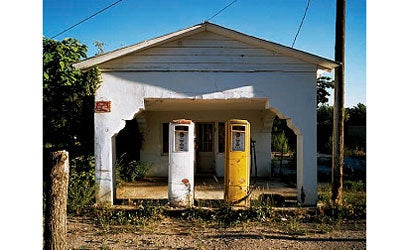Inside Photoshop: Using CS2’s Smart Sharpen Filter
Photoshop CS2's Smart Sharpen filter brings a new intelligence to an important task.

As a photographic property, sharpness has been given new meaning by digital imaging software. Programs such as Adobe Photoshop offer an extraordinary degree of control — after the fact — over the apparent sharpness of an image. Photoshop has always offered a choice of built-in sharpening tools, all found in the Filter > Sharpen submenu. Until Photoshop CS2, the best choice (confusing name aside) has been Unsharp Masking. Unsharp Masking is a powerful tool, but thanks to new algorithms and expanded controls, CS2’s new Smart Sharpen filter produces even better results. Smart Sharpen is slower than Unsharp Masking, but it offers far greater control — and for my images, quality trumps speed. Now I find myself using Unsharp Masking only when I’m pressed for time.
In imaging programs, sharpening involves an edge-detection process: Wherever the software finds an edge, it exaggerates it by making the darker side of the edge even darker and the lighter side even lighter. The Smart Sharpen filter allows you to specify how much lightening and darkening you want. Once you find a setting with which you’re particularly happy, you can click a button to save it for reuse on other images. This speeds up your workflow.
There are two modes in the Smart Sharpen interface, Basic and Advanced. Advanced mode incorporates all the choices and settings in Basic but adds the ability to lessen or eliminate the dark or light halos often caused by overzealous sharpening. Here’s a rundown of the options available in each mode.
Amount: A higher value simply increases the contrast between edge pixels, giving the appearance of greater sharpness. Easy to overdo; see column at right for specific suggestions.
Radius: Determines the number of pixels surrounding the pixels right along the edge that will be affected by the sharpening. The greater the radius value, the wider the area that will be subject to an increase in contrast — and the more obvious the sharpening. Too much and you’ll get a visible, and probably unwanted, “halo.”
Remove: Gives a choice of three methods to find and minimize blur, thus sharpening the image. They are:
1) Gaussian Blur is the kind of blur the Unsharp Mask filter looks for, and it permits the fastest results. This option basically turns Smart Sharpen into the Unsharp Mask filter, only with a pretty interface, so I don’t use it very often.
2) Lens Blur is the best choice, in my opinion, because it makes the software do a better job looking for edges and detail. This in turn produces finer sharpening of detail and reduced sharpening halos, and is especially useful for images that have a shallow depth of field.
3) Motion Blur makes the software look for, and reduce the effect of, blur due to camera or subject movement. If you plan to use the Motion Blur option, measure the angle of blur with the Measure tool, found under the Eyedropper tool. Note the measured value in the Options bar readout before entering the Smart Sharpen interface, and then input it into the Angle control field.
More Accurate: Processes the file twice for better removal of blur and enhanced sharpness. Although this can double processing time, it’s worth it, so I always leave this option checked.
Fade Amount: Adjusts the amount of sharpening in the highlights or shadows. A Fade value of 100 percent conceals the sharpening; lowering this value reveals it, incrementally, in effect increasing sharpness. Think of it as an opacity slider in reverse.
Tonal Width: Controls the range of specific tones that are modified by Smart Sharpening. Lower values restrict the adjustments to the darker areas for shadows and only the lighter regions for highlight correction. Lower settings produce more subtle results.
Radius: Controls the size of the area around each pixel that is used to determine whether a pixel is in the shadows or highlights. Just as with Radius in Basic Mode, moving the slider to the left specifies a smaller area, and moving it to the right specifies a larger area.
The true challenge in working with the Smart Sharpen filter is to find the right balance between the Amount and the Radius settings. For digital camera files or scans with minimal grain, use higher Amount settings, between 75 and 250, and lower Radius settings, between .3 and 1.5. This may look too “crispy” on your monitor, but such artifacts will be less visible in a print. For images with noticeable grain, use lower Amount settings of 15 to 30 and higher Radius settings of 10 to 20 in order to minimize texture.
In images with fine detail and a wide tonal scale, you can use the Smart Sharpen filter to adjust the actual contrast in addition to improving sharpness. In many of my full resolution digital camera files, especially of landscape subjects, I often apply a contrast sharpening to punch the image up. You can see the effect in the series of three images below. The process is very simple: Duplicate the Background layer, change the Layer Blending mode to Luminosity, and choose Filter > Sharpen > Smart Sharpen, setting an Amount of 20 and a Radius of 50. One thing hasn’t changed in the shift from chemicals to pixels: Contrast and sharpness are intimately linked.
Artist and photo educator Katrin Eismann is the author of several books on digital imaging. Visit photoshopdiva.com.